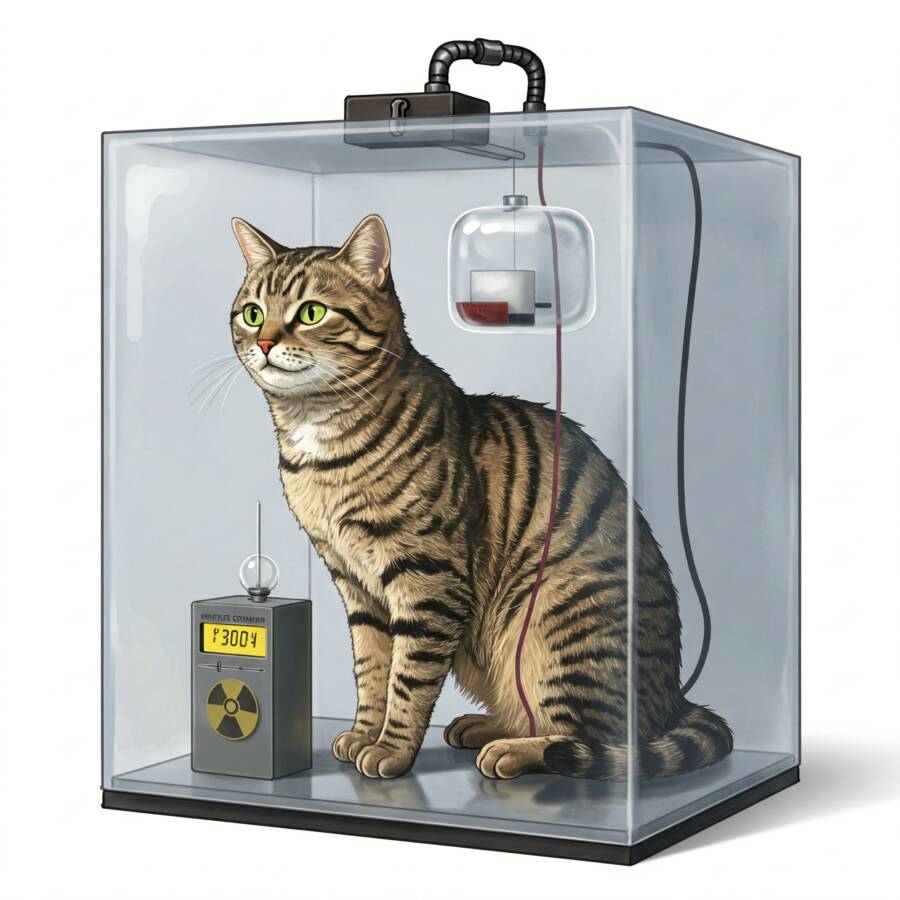2024 hasn’t even ended and scientists have made remarkable discoveries in many fields. They explored everything from animal behaviors to the secrets of the universe, and these breakthroughs helped us understand more about our world and set the tone for other future innovations.
An important study took place in the medical industry. Apparently, heart attack survivors are at a higher risk of developing cancer.
Israeli researchers found a link between heart attacks and cancer. They discovered that the small extracellular vesicles – sEV, resealed by the heart healing after a heart attack (they can be assimilated with little bubbles) promote cancer cell growth. However, they managed to find a way to inhibit these sEVs and this research could lead to better treatment for cardiac patients and a decrease in cancer risk.
The link between cancer and heart disease has puzzled researchers for a long time. Recent discoveries are shedding light on why heart attack survivors may be exposed to an increased risk of cancer.

The increased risk of developing cancer in heart disease patients
Revolutionary research from Israeli scientists has managed to uncover a biological mechanism connecting the two conditions. It’s about tiny particles released by the heart during recovery seeming to fuel the growth of cancer cells. This is a discovery that not only deepens our understanding but also offers hope for new treatments that could help millions of patients.
This observation of the strong link between heart disease and cancer was made long ago, but researchers couldn’t point out why until now. Studies suggest that particularly those suffering from heart failure or atrial fibrillations, or those who have suffered heart attacks, are more likely to develop cancer compared to those who don’t have cardiovascular issues.
An American Heart Association study from 2019 showed that people with an increased heart disease are more likely to be diagnosed with cancer over a 15-year period. They connected this risk with factors such as oxidative stress, chronic inflammation, or metabolic imbalances that lead to both conditions.
Small Extracellular Vesicles (sEVs)
Let’s explain what these sEVs are, more specifically: small particles released by cells into the extracellular environment, with a size from 30 to 150 nanometers. They are composed of proteins, lipids, RNA, and other molecules carrying biological information, as this composition allows them to play multiple roles when it comes to cellular communication.
These little particles are the ones that facilitate communication between cells by transferring signals and molecular information able to influence cell function and behavior. They can modulate immune responses, promote, or inhibit inflammation. Going back to the link between them and cancer, sEVs can carry pro-tumorigenic signals promoting cancer cell growth, which invade surrounding tissues and affect the immune system.
Their role in various diseases has proven to be significant, and they are connected not only to cancer and cardiovascular disease but also to neurodegenerative disorders and more. Their importance for cell communication makes them responsible for disease progression, may serve as biomarkers for diagnoses, and is explored as potential tools for diagnostic and therapeutic targets.
Studies to better understand the mechanism of how sEVs influence health and disease are still ongoing, and overall, they are in a rapidly growing area of research that has crucial implications for understanding disease processes and new treatment strategies.

The mice study
This study to investigate the role of sEVs released by the heart after myocardial infarction and their impact on cancer development has been held on mice.
The primary goal of the study was to understand how they contribute to the growth of cancerous tumors, particularly in the context of heart disease patients.
The methodology of this study included mice undergoing induced heart attacks to simulate the human conditions of myocardial infarction.
After the induced heart attack, researchers collected the released sEVs coming from the healing heart tissue, and this allowed them to notice the change in the composition and quantity of sEVs in the healing process.
Scientists analyzed the content of the sEVs focused on the molecular signals, and they examined how the signals potentially promote cell proliferation and how they maintain and help cancer cells expand.
They checked as well how sEVs influence the nearby cells behavior, assessing the impact on the tumor microenvironment.
Moreover, they introduce cancer cells into separate groups of mice to evaluate the impact of sEVs on cancer growth. They monitored the growth of tumors, size, and metastasis to determine how sEVs affected the cancer profession in heart-injured mice.
They found out that mice exposed to sEVs in a heart-injury context had larger and more aggressive tumors compared to the ones receiving sEVs from healthy mice, indicating that sEVs released during a heart attack include pro-cancer properties, enhancing tumor growth.
Intervention with medication
During the study, they explored the potential of a commonly prescribed heart disease medication, such as spironolactone, with the purpose of inhibiting the cancer-promoting effects of sEVs. The medication was administered to a subset of mice after the heart attack, and the impact on sEV production and tumor growth was analyzed. As a result, medication effectively reduced the number of sEVs released, slowing tumor progression.
This study shows the unintended consequences of heart healing, putting light on how recovery mechanisms can inadvertently support cancer growth. Such a result suggests that a novel therapeutic strategy to reduce cancer risk in heart disease patients might target sEVs on their signaling pathways.
Scientists are continuing their investigation on molecular mechanisms behind the sEVs effects on tumors, and future studies will be needed to validate the hypotheses of using existing heart medication as treatment for both heart disease and cancer prevention.
The research enhanced our understanding of the connection between heart disease and cancer, and it opened new avenues for therapeutic interventions.

The Framingham Heart long-term study findings
Focusing on the broader implications of the study linking heart disease and cancer through small extracellular vesicles, the link was also observed in long-term studies emphasizing the overlap between the two conditions.
Framingham Heart Study is an ongoing multi-generational study, started in 1948. It had proven extensive data on cardiovascular disease risk factors, and in 2019, they analyzed data from 12,712 participants with no heart problems at the study’s outset. Over a 15-year period, they found that individuals with risk factors such as high cholesterol, high blood pressure, or obesity presented a three times higher risk of being diagnosed with cancer compared to those without the risk factors.
This was an important highlight on how cardiovascular health determines overall health and is linked to cancer risk.
The mechanism behind this increased risk involves a shared pathophysiological process, including oxidative stress and chronic inflammation, both with the characteristic of promoting tumor development.
With time, they discovered many factors linked to heart disease, like sedentarism, obesity, smoking, and a poor diet, and they are all associated with increased cancer risk, too.
This research explored the biological mechanism that links heart disease and cancer, and for instance, chronic inflammation related to heart disease can represent a microenvironment that conduces to tumor growth. Moreover, there are certain biomarkers common to both conditions, supporting the theory of these two conditions are linked.
These latest findings underscore the need for an integrated approach when it comes to healthcare, considering both cardiovascular and cancer risks. It’s important to focus on lifestyle changes and use preventive measures that benefit both cancer and heart disease prevention. Healthcare providers can improve an outcome by interconnecting these two conditions.
It’s crucial for these studies to continue and further elucidate the mechanism to understand how sEVs release influence cancer risk and lead to new therapeutic strategies to improve survival rates and quality of life for patients.
Concluding, the long-term study is also important for its illustration of the complex relationship between heart disease and cancer. It emphasizes the importance of addressing both conditions together, not only in research but also in clinical practice.
This is a book that you can check out: Prevent and Reverse Heart Disease: The Revolutionary, Scientifically Proven, Nutrition-Based Cure
Read next: 8 Things That Happen to Our Minds When We Read, According to Scientists














